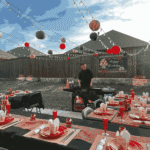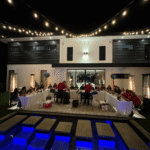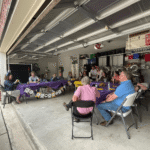It’s not news that numerous industries are struggling in this economy. Many companies are cutting ties with their employees faster than you can blink an eye. Also, the recent pandemic did not help matters.
There is currently a lack of purchasing power as people try to get their lives together. High-priced goods such as apparel, art, jewels, mansions, and luxury cars will experience slow business movement. However, companies selling to those with less money, such as convenience stores, are doing well right now. You have a recipe for success if you can sell high-quality things at a low cost to those who don’t have much money to spare.
Ever heard of mobile catering?
Because of this, it is a good time to dabble in mobile catering. People barely have enough money and time to waste and refrain from spending so much on lunch. Also, most people do not have the time to prepare and pack their own lunches every day and do not have enough money to dine out. This is where mobile catering comes into play.
Mobile catering is fast becoming a thing, and many foreign cuisines are available on request. One of such cuisines is hibachi.
A Brief History of Hibachi
Many people associate hibachi with the Japanese-style teppanyaki dining common at Japanese-style restaurants in the United States. Translated loosely, hibachi means “fire bowl,” and it refers to the utensil used to prepare the meal rather than the meal itself or a specific way of dining.
Historically, the utensil wasn’t even used to prepare food until centuries later, as the Japanese initially employed it to hold burning charcoal. The earliest devices were built of heat-resistant materials like cypress wood coated with clay, had an open top, and were cylindrical or box-shaped.
While it was many years before it was employed as a cooking appliance, it is now connected with the little cooking stoves or hot iron plates used in modern Japanese restaurants in the United States.
Hibachi Coming to America
The hibachi grill arrived in America after the Second World War when Americans sought to recreate the cuisines they had eaten while traveling across the world. Many restaurants started employing tiny aluminum or cast-iron grills to allow customers to prepare their meals at their tables, which led to the surge in grilling vegetables and meat at home on barbecues and grills in their backyard.
Around the same period, this cooking style became popular in modern Japanese-style restaurants in the United States. This style of eating experience places as much emphasis on entertainment as it does on the food itself due to the theatrics of the chefs.
Hibachi catering for corporate events is not a strange sight, actually. Guests usually congregate around a single massive table with a flat-top grill constructed of cast iron or sheet metal in the center. The chefs prepare Japanese cuisine in front of the visitors, frequently adding a theatrical touch to keep diners interested as they wait for their dinner. You can see them twisting, spinning, and somersaulting pans and pots covered in fire with such skill and dexterity it can be an excellent event to experience and exhilarating to watch.
While the proper title for this sort of dinner is teppanyaki, it is more popularly known as hibachi in America.
You can also get this experience on mobile, in private events, and even at home. In fact, you can get the best mobile hibachi chef in Fort Worth, TX. You can also get top-notch hibachi catering for corporate events whenever you need it.









